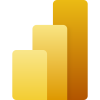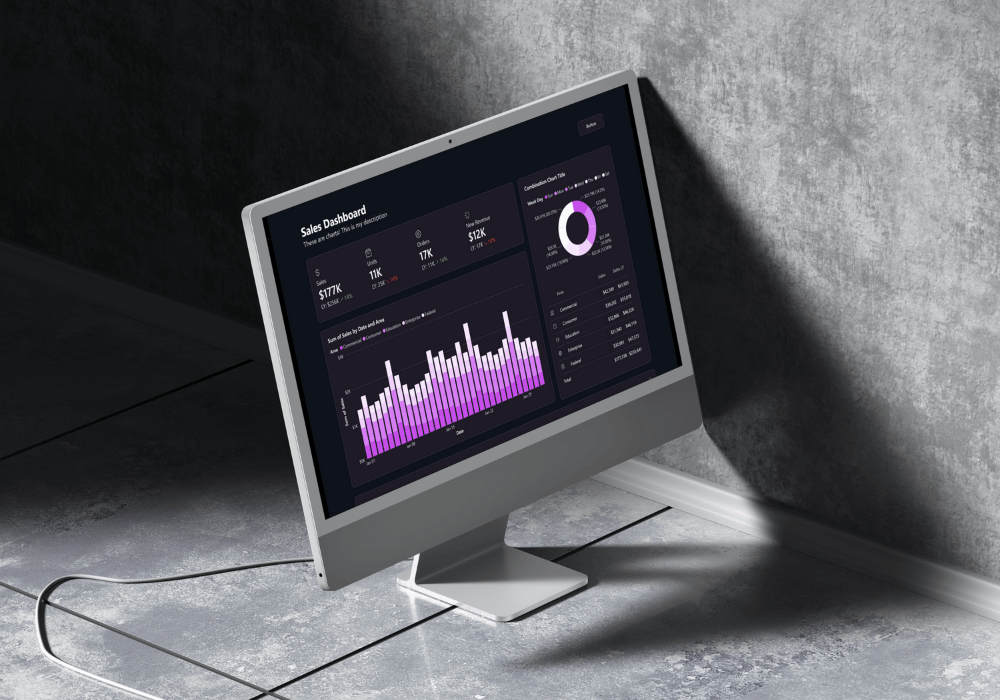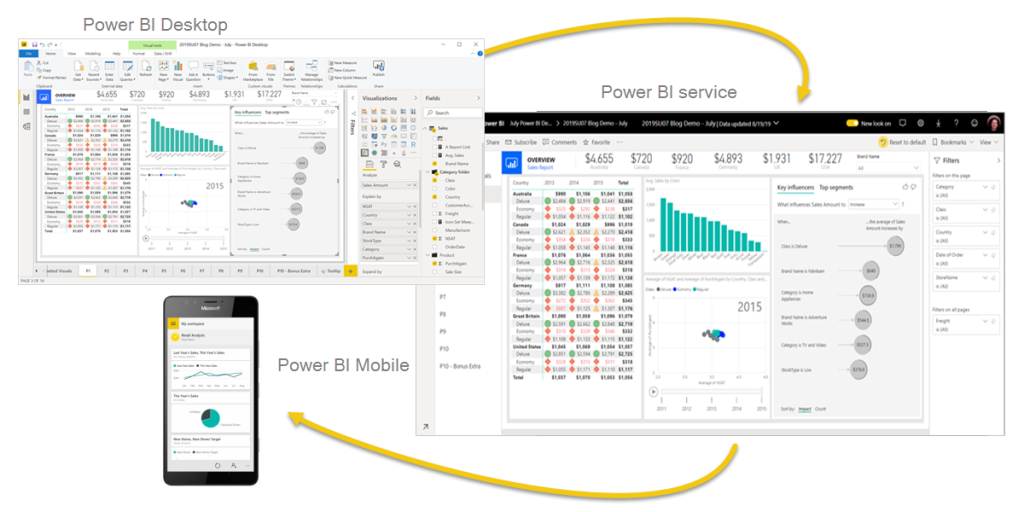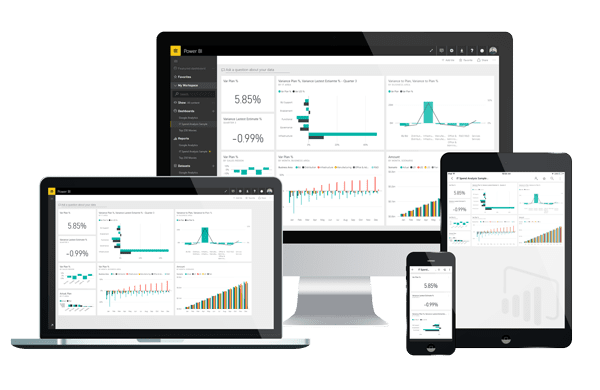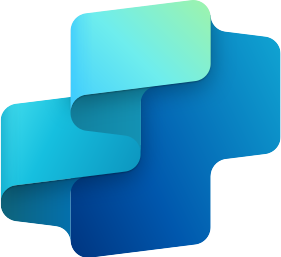The way you use Power BI depends on your role within a project or team. Others, with different roles, may use Power BI in different ways.
For example, you may primarily use Power BI Service to view reports and dashboards. A colleague who specializes in data processing and business report creation may rely heavily on Power BI Desktop or Power BI Report Builder to design reports, then publish them to Power BI Service, where you can access them. Another colleague working in sales might use the Power BI Mobile app more frequently to track sales targets and explore details of new sales opportunities.

